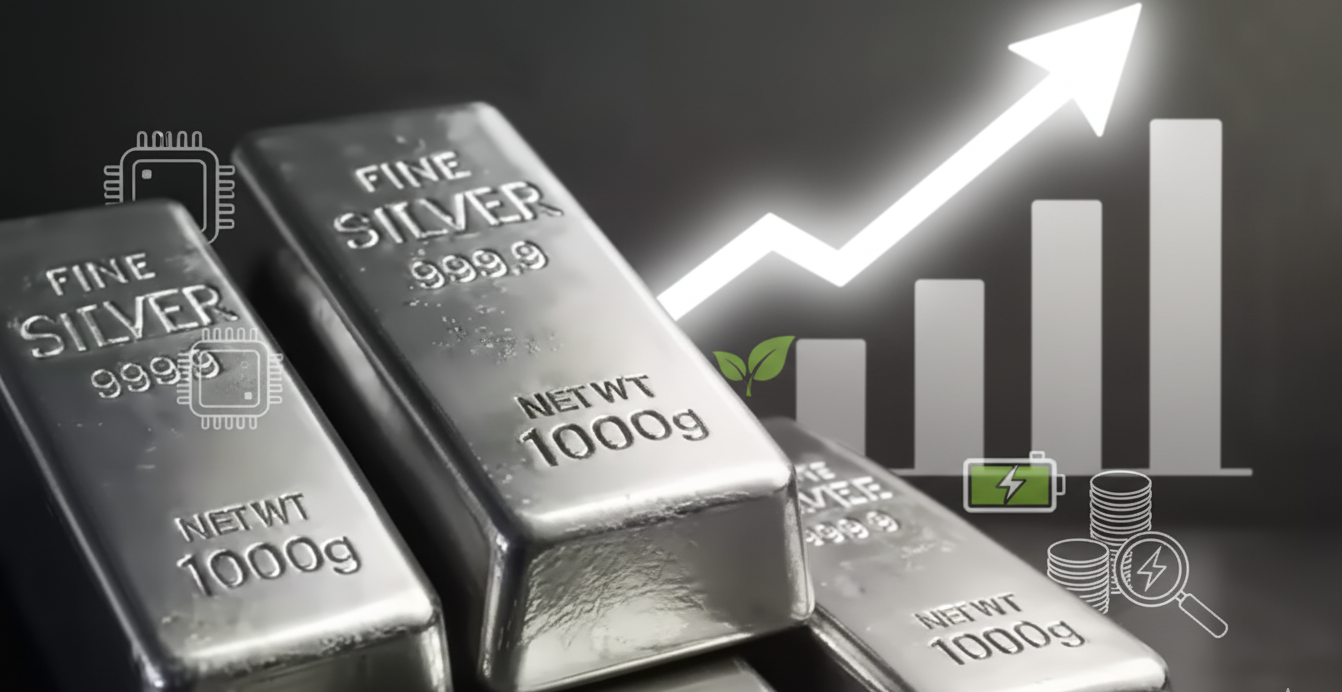The price of silver in key Indian markets has surged past the ₹1.9 lakh per kilogram mark, nearly double the 2024 average, and the reasons run far deeper than short-term trading. From supply bottlenecks and industrial appetite to rupee weakness and safe-haven flows, multiple forces are aligning to lift silver out of its “poor man’s gold” tag and into serious portfolio territory.
Supply Crunch Tightens the Market
Global silver production is struggling to keep pace with demand. Much of silver is produced as a by-product of base-metal mining (such as copper and zinc), meaning the metal has little control of its own destiny when those mines slow. Mining disruptions, declining ore grades and a paucity of new projects are squeezing supply.
India’s high import dependence means this tight global supply shows up locally in the form of higher landed costs and a domestic premium.
Industrial Demand Zooms
Silver’s appeal today extends far beyond jewellery. In India especially, sectors like solar-energy manufacturing, EVs, electronics and digital infrastructure are consuming more silver thanks to its excellent electrical and thermal conductivity.
With policy incentives pushing solar installations and EV adoption, industrial demand is expected to remain structurally robust, providing a solid underpinning for prices.
Investment & Safe-Haven Flows Fuel the Rally
Amid inflation concerns, weak returns on traditional assets and geopolitical jitters, investors are increasingly turning to precious metals. Though gold often dominates headlines, silver, with a lower ticket price and sharper upside potential, is attracting both retail and institutional interest.
Physical buying, digital silver platforms and ETF inflows are amplifying the impact of these investment flows on the domestic market.
Rupee Weakness & Import Cost Pressures
Because India imports much of its silver, a weak Indian rupee versus the US dollar makes each kilogram costlier in rupee terms. Add to that customs duties, GST and logistics, and a domestic premium above global spot prices becomes inevitable. In 2025, rupee softness has been a significant multiplier of the silver rally.
Macro & Geo-Political Factors Add Fuel
Silver is also behaving like a financial hedge. As global uncertainty rises—whether from central-bank policy shifts, inflation or regional conflicts—capital tends to move into metals. Lower global interest rates, a dovish turn in monetary policy and increased speculative momentum are all contributing to silver’s strength.
Where Did It Come From? Decade of Silver Price Trends
Here’s how silver’s price in India has evolved:
Year |
Avg Silver Price (₹/kg) |
Year-on-Year Change |
2015 |
₹37,800 |
— |
2016 |
₹36,990 |
▼ 2.1% |
2017 |
₹37,825 |
▲ 2.3% |
2018 |
₹41,400 |
▲ 9.5% |
2019 |
₹40,600 |
▼ 1.9% |
2020 |
₹50,000 |
▲ 23.1% |
2021 |
₹65,400 |
▲ 30.8% |
2022 |
₹76,000 |
▲ 16.2% |
2023 |
₹66,990 |
▼ 11.9% |
2024 |
₹95,700 |
▲ 42.8% |
2025 |
~₹1,90,000 |
▲ 98.6% (so far) |
This raw data suggests that the current surge is not merely cyclical, but may be part of a structural shift in the silver market.
What Experts Are Saying
Analysts broadly agree that the combination of tight global supply, rising industrial consumption and strong investment demand sets silver up for further gains. In India, the rupee effect and import premiums serve to accentuate the local rise even further.
That said, they also caution that short-term corrections are plausible. Price swings remain sharp, and events such as a strong dollar or weak industrial demand could trigger a pull-back. A common investor tip: utilise systematic investment tools—such as periodic buys via silver-ETFs or physical accumulation—rather than chasing spikes.
Outlook: Can Silver Keep the Shine?
-
Forecasts suggest silver in India could potentially reach ₹2,00,000–₹2,40,000/kg by 2026 if current trends hold.
-
Technological and policy catalysts (e.g., solar manufacturing, EV roll-out) remain strong supports.
-
Investor behaviour is evolving: younger, digital-first buyers favour silver as a growth metal, complementing gold’s stability.
-
However, macro uncertainties, rupee strength, global rate hikes, a step-back in industrial demand, can still upset the trajectory.


